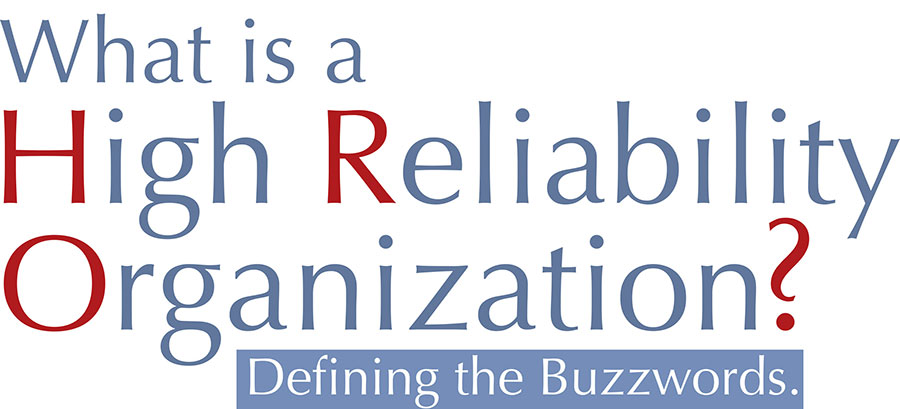
In the face of increasingly stringent standards of care from the Joint Commission, the focus of health care improvement efforts now rests on the goal of becoming a High Reliability Organization (HRO).
But what does that really mean?
On the surface, the term seems self-explanatory: an HRO is one whose clients can count on it to perform as advertised. The standard example is that of the airline industry. Statistically speaking, if you buy a ticket to fly to from New York to London, the odds are overwhelmingly in favor of you making that trip successfully and safely. Other, less publicly touted examples of industries that have achieved High Reliability are nuclear power plants and chemical manufacturers. Knowing these examples, however, does not really explain what goes into making an HRO.
In terms of health care, the purpose of a hospital or clinic seeking to achieve HRO status is to make health care as safe for patients as possible. By now, everyone knows that the massive efforts to improve health care safety in the wake of the Institute of Medicine’s 1999 report have been notably ineffective. A study published in the April 2011 issue of Health Affairs found that an incredible one third of hospital patients experience “adverse effects” as a result of their treatment and fully 7% of hospital patients suffer permanent or fatal injury during their stays.
Clearly, previous efforts to make health care a more reliable industry have failed.
The latest approach to solving the problem of health care safety is the idea of the HRO. What sets HRO theory apart from previous attempts is that rather than merely addressing individual goals one at a time, it proposes a complete change in the culture of health care, aimed at making it possible to institute individual changes more effectively and efficiently.
The primary qualities of an HRO are:
 1) Constant revising and improvement
1) Constant revising and improvement
A willingness to treat the running of the organization as a fluid system that is constantly being reconsidered and revised to improve patient safety and outcome.
 2) Transparency
2) Transparency
Transparency at all levels. Rather than attempting to put the best face on things, HROs make sure that employees at all levels are aware of what is working and what needs improvement.
 3) Alternative Solutions
3) Alternative Solutions
HROs look for alternate solutions to problems rather than taking the easiest or most traditional approach. They are willing to “think outside the box,” and consider that the presenting problem may be merely a symptom of a different complication.
 4) Utilizing data and metrics
4) Utilizing data and metrics
HROs monitor and measure performance on several different levels, such as patient outcome, patient satisfaction, and staff morale. By keeping accurate records and generating detailed metrics, these organizations have better data on which to base decisions and with which to investigate potential process improvements.
 5) Celebrating failures
5) Celebrating failures
HROs put a positive spin on failure. By recognizing that humans make mistakes and encouraging employees at all levels to speak up when they think something might be going wrong, HROs both help prevent small errors from snowballing into catastrophes and create an atmosphere that is open to learning from “near misses,” medical mistakes that are caught before they can cause serious harm.
 6) On-going process
6) On-going process
HROs see improvement as an on-going process, not a goal. No matter how well an HRO is functioning, its members never stop looking for ways to do better.
 7) Participation at all levels
7) Participation at all levels
HROs encourage employees at all levels to participate in the process. The HRO model deconstructs the traditional health care hierarchy that makes it an insult, for example, for a nurse to question a doctor’s decision. Instead, a culture of mutual respect for each provider’s experience, regardless of formal title, and of collaboration rather than competition promotes a diversity of perspectives and provides checks and balances to safeguard patients.
As a result of the traits listed above, HROs are more flexible and better able to adapt to changing situations and to setbacks.
As this list of traits illustrates, the idea of the HRO movement is not to create a new set of standards that will magically transform health care. Instead, the HRO model provides a culture in which health care organizations can more effectively and efficiently meet the standards set forth by the Joint Commission. The HRO model is not a goal; it is an ongoing process and a new way of looking at how we provide health care.
See how we help our client achieve High Reliability in their hospitals.
.png?width=600&height=314&name=Untitled%20design%20(100).png)